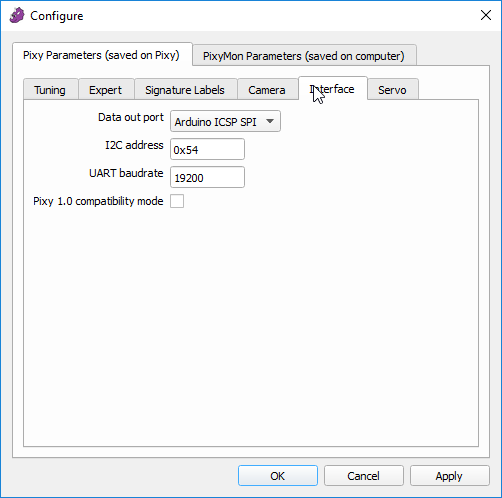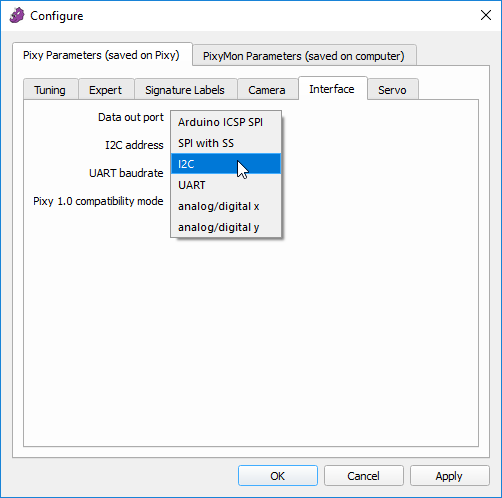Interface tab
This tab contains parameters for configuring how Pixy2 communicates its results (what it senses) to the world. Pixy2 uses one of several interfaces to do this – UART, SPI, I2C, USB and analog/digital output. The Interface tab is present regardless of the program that is being run on Pixy2. To bring up the Interface tab, first bring up the Configure Dialog (click on the gear icon or select File➜Configure). Now select the Interface tab under Pixy Parameters.
- Data out port: This parameter selects the output port.
- Arduino ICSP SPI: This is the default port that is used to communicate with Arduino through the ICSP connector.
- SPI with SS: This is the same as the Arduino ICSP SPI except that it includes support for Slave Select, which is commonly used with SPI.
- I2C: This selects I2C, which is a common multi-drop 2-wire port.
- UART: This is the common “serial port”, or asynchronous serial.
- analog/digital x: This will output the x value of the largest detected object as an analog value. It also outputs whether an object is detected or not as a digital signal.
- analog/digital y: This will output the y value of the largest detected object as an analog value. It also outputs whether an object is detected or not as a digital signal.
- I2C address: This parameter sets Pixy2's I2C address if the Data out port is set to I2C.
- UART baudrate: sets the baud rate if the Data out port is set to UART.
- Pixy 1.0 compatibility mode: Pixy2 uses a different serial protocol than the original Pixy. The new protocol is simpler and supports multiple modalities, but if you want to use Pixy2 with your original Pixy Arduino programs, you can enable this parameter and Pixy2 will switch to the original Pixy serial protocol. Note, this parameter only applies to SPI, UART, and I2C interfaces – not USB. Additionally, it only applies to the color_connected_components program.

